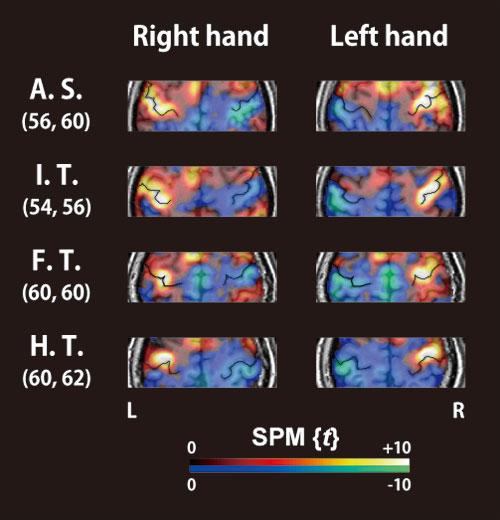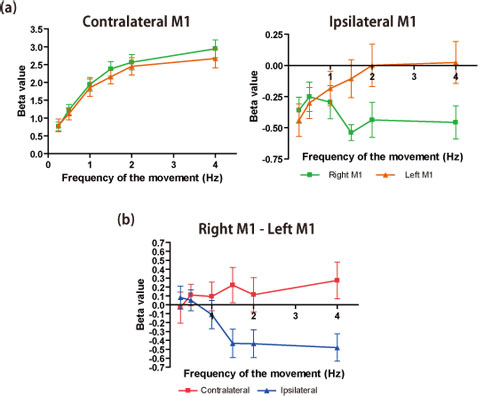Hayashi MJ, Saito DN, Aramaki Y, Asai T, Fujibayashi Y, Sadato N (2008) Hemispheric Asymmetry of Frequency-Dependent Suppression in the Ipsilateral Primary Motor Cortex During Finger Movement: A Functional Magnetic Resonance Imaging Study. Cereb Cortex
Electrophysiological studies have suggested that the activity of the primary motor cortex (M1) during ipsilateral hand movement reflects both the ipsilateral innervation and the transcallosal inhibitory control from its counterpart in the opposite hemisphere, and that their asymmetry might cause hand dominancy. To examine the asymmetry of the involvement of the ipsilateral motor cortex during a unimanual motor task under frequency stress, we conducted block-design functional magnetic-resonance imaging with 22 normal right-handed subjects. The task involved visually-cued unimanual opponent finger movement at various rates. The contralateral M1 showed symmetric frequency-dependent activation. The ipsilateral M1 showed task-related deactivation at low frequencies without laterality. As the frequency of the left-hand movement increased, the left M1 showed a gradual decrease in the deactivation. This data suggests a frequency-dependent increased involvement of the left M1 in ipsilateral hand control. By contrast, the right M1 showed more prominent deactivation as the frequency of the right-hand movement increased. This suggests that there is an increased transcallosal inhibition from the left M1 to the right M1, which overwhelms the right M1 activation during ipsilateral hand movement. These results demonstrate the dominance of the left M1 in both ipsilateral innervation and transcallosal inhibition in right-handed individuals.

